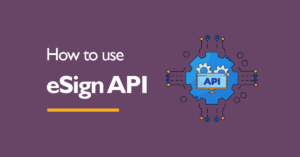If only content marketing were as easy as pressing a button: publish, promote, and boom—instant success.
Unfortunately, reality looks a bit different.
Content marketing involves so many parts that you can get overwhelmed without a solid system in place, and your strategy can fall apart.
That’s where a well-optimized content workflow makes all the difference.
It’s the backbone of a strong content marketing strategy, keeping you (or your team) aligned, streamlining your processes, and ensuring that high-quality content consistently reaches your audience.
So, how do you build a workflow that works for you? Let’s break it down.
What is a Content Workflow?
A content workflow is a series of tasks your team performs to move content from ideation to publication as smoothly and efficiently as possible.
Whether you’re crafting a blog post, designing an infographic, or producing a video, a content workflow breaks the process into clear, actionable steps.
Although it outlines the processes, a content workflow relies heavily on the people, tools, resources, and collaboration needed for content creation.
The goal of a workflow is to ensure you don’t overlook any detail, miss deadlines, or waste creative energy.
With a streamlined flow, you get efficiency, creativity, and a process that scales with your business.
Types of Content Workflows
Before you start mapping out a content workflow, you need to decide which type—task-based or status-based—best suits your team’s needs.
Each one serves a different purpose, and choosing the wrong approach can slow things down instead of streamlining the process.
Task-based workflow
A task-based workflow breaks down content production into individual to-dos, assigning each step to the right person.
Each stage of the task must be carried out before moving on to the next step.
This structure is excellent for teams that work linearly, where each piece of content moves from one phase to the next in a precise sequence.
So, if you need strict accountability and step-by-step execution, a task-based workflow is the way to go.
Status-based workflow
A status-based workflow, on the other hand, organizes content based on its current stage in the pipeline (draft, in-review, approved, published, etc). Instead of focusing on tasks, it tracks progress by status.
This method is ideal for more experienced teams handling multiple pieces of content simultaneously. It allows stakeholders to see quickly what’s in motion, what’s stuck, and what’s ready to go live.
So, if agility and visibility across multiple projects are your priorities, a status-based approach gives you the flexibility to adapt and pivot when needed.
Key Stages of a Content Workflow Creation
A solid content workflow enables you to create, refine, and distribute content to drive actual results. Each stage plays an essential role in boosting your content’s performance.
Stage 1: Planning
This is the foundational stage, where you lay the groundwork for success. Planning involves:
- Researching what’s trending in your industry and what questions your audience is asking. You can use SEO tools, customer feedback, or competitor analysis to uncover topics with real impact,
- Topic selection and prioritizing only the ideas that align with your goals (brand awareness, lead generation, or engagement),
- Setting up a content calendar to help you plan ahead, balance different content types, avoid last-minute scrambling, and keep you (or your team) organized.
Stage 2: Creation
This is where all the ideas come to life. It involves putting all your ideas into action. Creating a content workflow involves the following:
- Writing: Clarity and value should always come first in any piece of writing, whether it’s a blog post, case study, or social media copy. Keep it engaging and structured for easy reading.
- Designing: Visuals matter. Well-designed graphics, infographics, and videos enhance content appeal and boost engagement.
- Quality assurance: Run every piece through spell-check, grammar tools, and readability tests. Ask yourself: Does this provide value? Is it clear and concise?
Stage 3: Review and approval
Before you hit publish, your content needs a second (or third) pair of eyes. This stage often features proofreading, editing, and fact-checking. Specific tasks to perform include:
- Editing: Fact-check, refine tone, and eliminate fluff. Make sure it aligns with your brand voice.
- Compliance checks: If you’re in a regulated industry, ensure legal and compliance teams review the content for accuracy and risk management.
- Stakeholder approvals: From managers to subject matter experts, getting the green light from key players ensures accuracy and alignment with company goals.
Stage 4: Publishing and distribution
Even the best content is useless if no one sees it. This stage focuses on getting it in front of the right audience. Start with the following:
- Create a schedule: Choose the right timing based on audience habits and platform algorithms—automate where possible.
- Promote across channels: Share it on social media, email newsletters, and syndication platforms. You can repurpose content into different formats to maximize reach.
Stage 5: Performance tracking
A content’s life cycle continues post-publication. This includes:
- Analyzing engagement: Track likes, shares, comments, and time spent on pages to gauge interest.
- Measuring conversions: Consider how many people took action. Whether it’s sign-ups, downloads, or purchases, tie content to business goals.
- Making data-driven adjustments: Use insights to refine future content. Double down on what works and scrap what doesn’t.
Why Optimize Your Content Workflow?
An optimized content workflow is your well-oiled engine that defines roles and allows the process to flow smoothly from start to finish. Here’s why an optimized workflow matters:
1. Saves time and resources
Time is the one thing your team never has enough of, and an inefficient workflow burns through it faster than a bad habit.
Without a structured process, content production becomes an endless loop of delays, missed deadlines, and miscommunications. Instead of producing new content, they’re stuck fixing avoidable mistakes.
If you’re outsourcing, inefficiencies drive up costs quickly. Examples include paying writers for unnecessary revisions, overburdening editors, and forcing designers to work overtime.
An optimized workflow eliminates these bottlenecks. It ensures that everyone gets what they need promptly, approvals happen timely, and content moves smoothly from one stage to the next.
2. Ensures consistency and quality:
Imagine if every blog post, email, or social media update sounded like it came from a different company.
One post is casual and fun, another is stiff and corporate, and the next is a confusing mix of both. That’s what happens when there is no workflow to enforce consistency.
Your audience expects a cohesive experience, whether reading a product page or an Instagram caption.
In this case, a structured workflow ensures that your brand always shows up polished, professional, and recognizable.
3. Improves efficiency and productivity
A solid content workflow means:
- Creatives get clear briefs upfront, so they’re not guessing expected outcomes.
- Approval timelines are set, so drafts don’t collect dust in someone’s inbox.
- Tasks are automated, so manual follow-ups don’t slow things down.
- Content calendars track progress so the whole team knows what’s happening at any given moment.
When each step is mapped out and optimized, your team can focus on creating instead of chasing down approvals or waiting for feedback.
The result? Content production is faster, with less stress, and without sacrificing quality.
4. Ensures timely delivery
Content marketing thrives on timing.
Good content at the wrong time is bad content. And if your workflow isn’t built for efficiency, you’ll always be playing catch-up.
When your workflow runs smoothly, content is delivered when it needs to be, not when your team finally gets around to finishing it.
This makes all the difference in engagement, conversions, and overall impact.
5. Promotes team collaboration and accountability
Content creation isn’t a solo effort. Writers, editors, designers, strategists, and managers all have a role to play. But when responsibilities aren’t clear, collaboration turns into chaos.
An optimized workflow clarifies who does what, reducing miscommunication and overlap. Everyone stays accountable, and collaboration becomes more seamless to produce better content.
6. Adaptable and scalable
A rigid, non-flexible content marketing workflow is just as bad as having none at all.
If your content process only works when producing two blog posts a month, what happens when you need ten? Or when you bring video, podcasts, and other forms of content into the mix?
Content needs change, teams evolve, and platforms shift. Your workflow should be built to adapt so that no matter how fast you scale, your content machine keeps running smoothly.
How to optimize your content workflow
To produce high-impact content efficiently, you need a structured, repeatable system. Here’s how to optimize your content workflow:
Step 1: Establish your content goals and audience
Without a clear goal, your content will get caught in the whirlpool of confusion. Your goal will inform the type of content you produce, the platforms you use, the metrics you track, and the audience you’re trying to reach.
Are you aiming to drive organic traffic, generate leads, or establish industry authority? Each goal requires a different content strategy.
At the same time, you need to understand your audience. Research customer personas, analyze search intent, and gather insights from existing content performance to shape your approach.
The more targeted your content, the more effective it will be.
Step 2: Define clear roles & responsibilities
Clearly document each role in your workflow so every team member knows their tasks and deadlines. Here’s a simple breakdown:
- Writers draft compelling content based on research and guidelines.
- Editors refine the narrative, check for consistency, and ensure clarity.
- SEO specialists optimize content for search visibility.
- Designers create visuals, infographics, and branded elements.
- Content managers oversee scheduling and ensure alignment with strategy.
If you’re a solo creator, map out your process to stay organized.
Step 3: Standardize your content creation process
Inconsistency kills momentum. Standardization, on the other hand, turns content creation into a seamless process. Here’s how to do it:
- To speed up production, create templates for different content types (blogs, case studies, emails, etc.).
- Develop editorial guidelines that cover tone, formatting, and grammar rules.
- Define your brand voice so all content aligns with your identity across all platforms.
A well-documented process eliminates guesswork and keeps your content team aligned.
Step 4: Use the right tools and automation
The right tech stack can transform a slow workflow into a well-oiled machine. Here are some tools to consider:
- Content Management Systems (CMS) like WordPress, HubSpot, or Contentful for organizing and publishing content,
- Project management tools like Asana, Trello, or ClickUp to track progress and manage deadlines,
- AI-assisted writing tools like Grammarly, Jasper, or SurferSEO to enhance content quality and optimize for search,
- AI Humanization tools and bypassers like Undetectable AI and Humanize AI to beat detectors,
- Collaboration platforms like Google Docs, Notion, or Slack to streamline communication, teamwork, and feedback,
- Automation tools like Zapier or Buffer to automate content scheduling and distribution.
Pick the right mix for your workflow, and watch your content engine run like clockwork.
Step 5: Streamline approval and publishing
One of the biggest content bottlenecks? Waiting for approvals. To fix this:
- Define a clear approval hierarchy (who needs to review what and when?).
- Set deadlines for feedback to avoid endless revisions.
- Use collaborative editing tools like Google Docs or Notion for real-time changes.
- Schedule content in advance using tools like Buffer, Hootsuite, or native platform schedulers to maintain consistency.
You prevent delays and keep content moving by tightening up your approval and publishing processes.
Step 6: Track and optimize performance
Creating content is only half the battle. The other half is tracking what’s working and what’s not and optimizing accordingly. You can use analytics tools like GA4, Hotjar, and Clarity to gather traffic and engagement insights
Review these metrics regularly to understand how users interact with your content and use them to tweak your content strategy.
If a certain topic drives high engagement, double down on it. If a blog post isn’t ranking, refine its SEO or repurpose it into a different format.
RoninPoint Services: Your Reliable Content Partner
An optimized content workflow is all about designing a system that removes friction, eliminates confusion, and lets your team focus on what they do best—creating high-quality content that drives results.
Without it, you’ll constantly be stuck in reactive mode, scrambling to fix issues instead of proactively improving your strategy.
But with it, content production becomes a seamless, efficient, and scalable process that supports your team and your goals.
At RoninPoint Services, we have the expertise and resources to guide you through creating a tailor-made content marketing workflow.
Need help planning every content creation stage, from ideation to publishing? Contact us right away.
Who wrote this?
Joanna is a versatile content writer with a knack for creating helpful content that resonates with others. When she’s not typing away, she finds solace in quiet moments, music, and cinematography videos. She believes she has an untapped well of creativity inside her and she’s willing to dig deep to fetch it out.
- Joanna Alihttps://roninpoint.com/author/joanna/June 15, 2025
- Joanna Alihttps://roninpoint.com/author/joanna/
- Joanna Alihttps://roninpoint.com/author/joanna/
- Joanna Alihttps://roninpoint.com/author/joanna/









